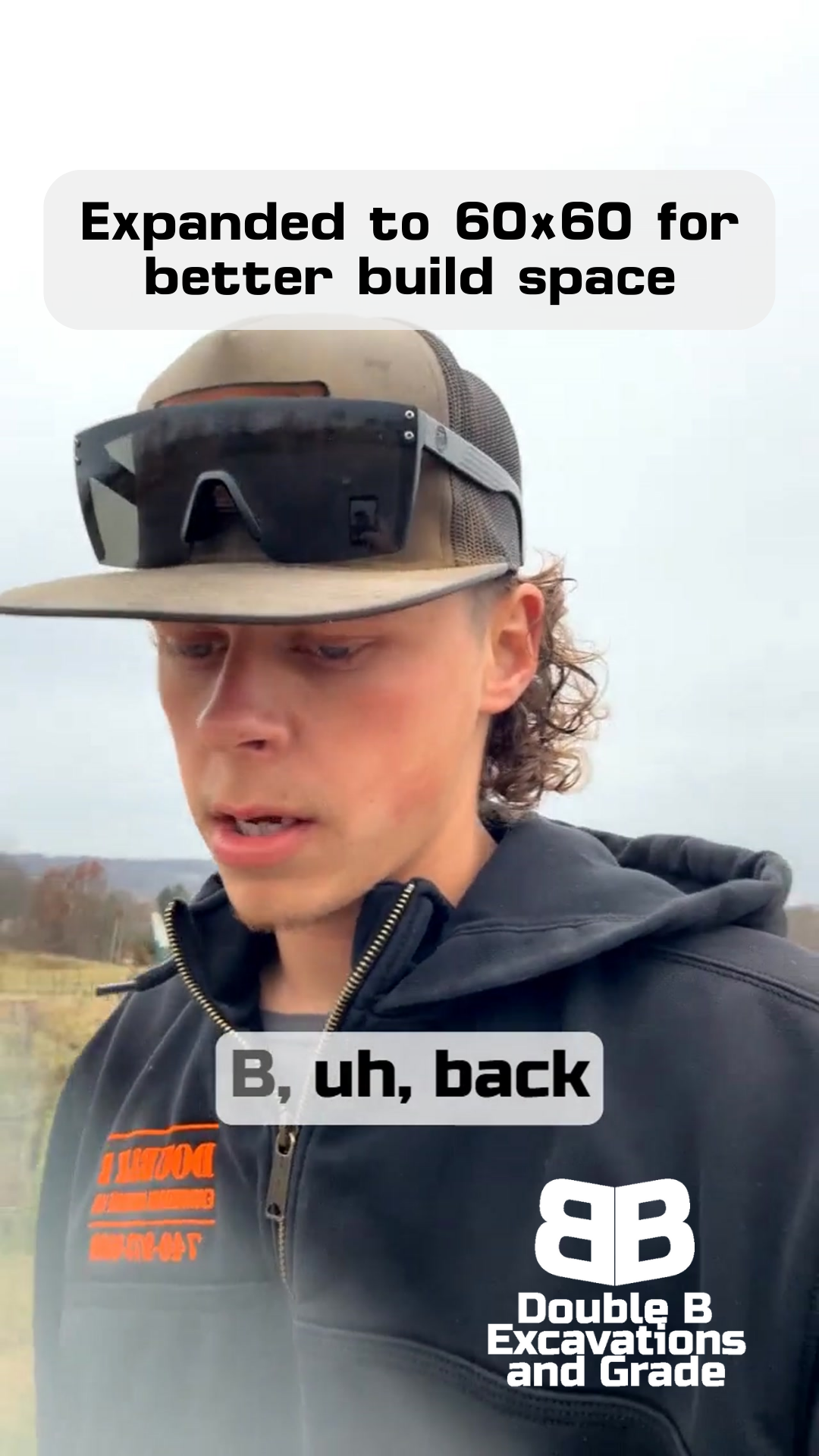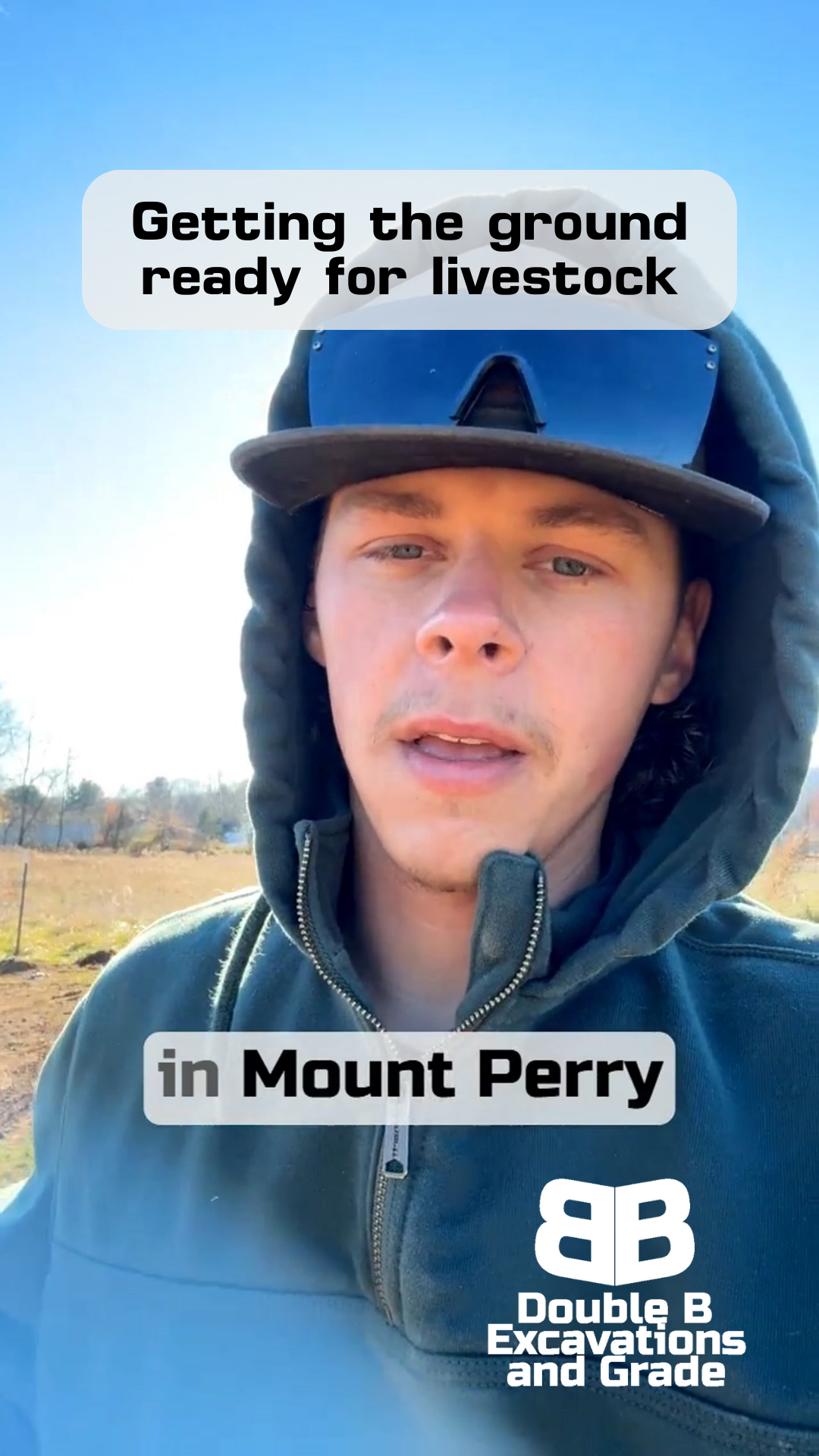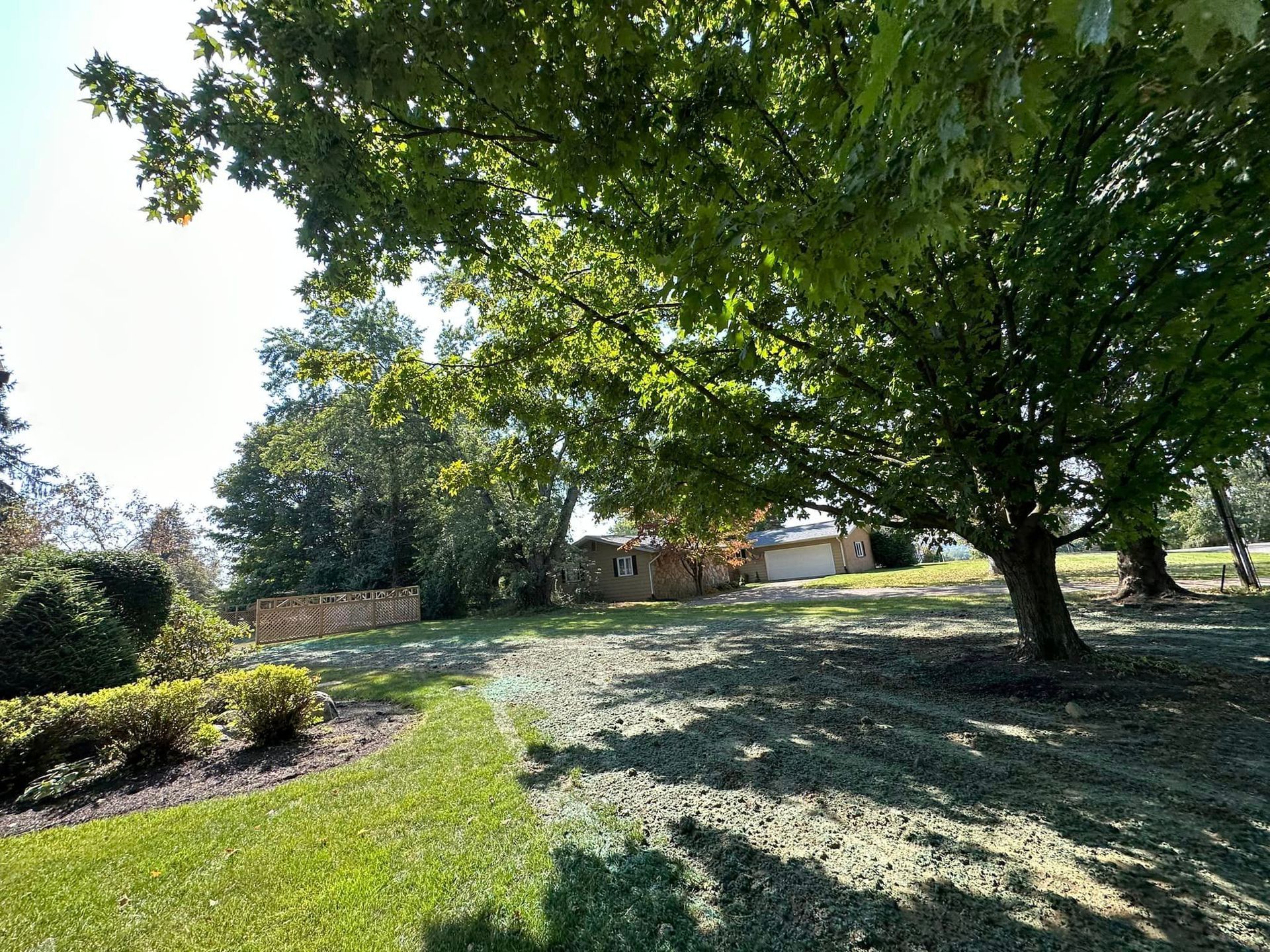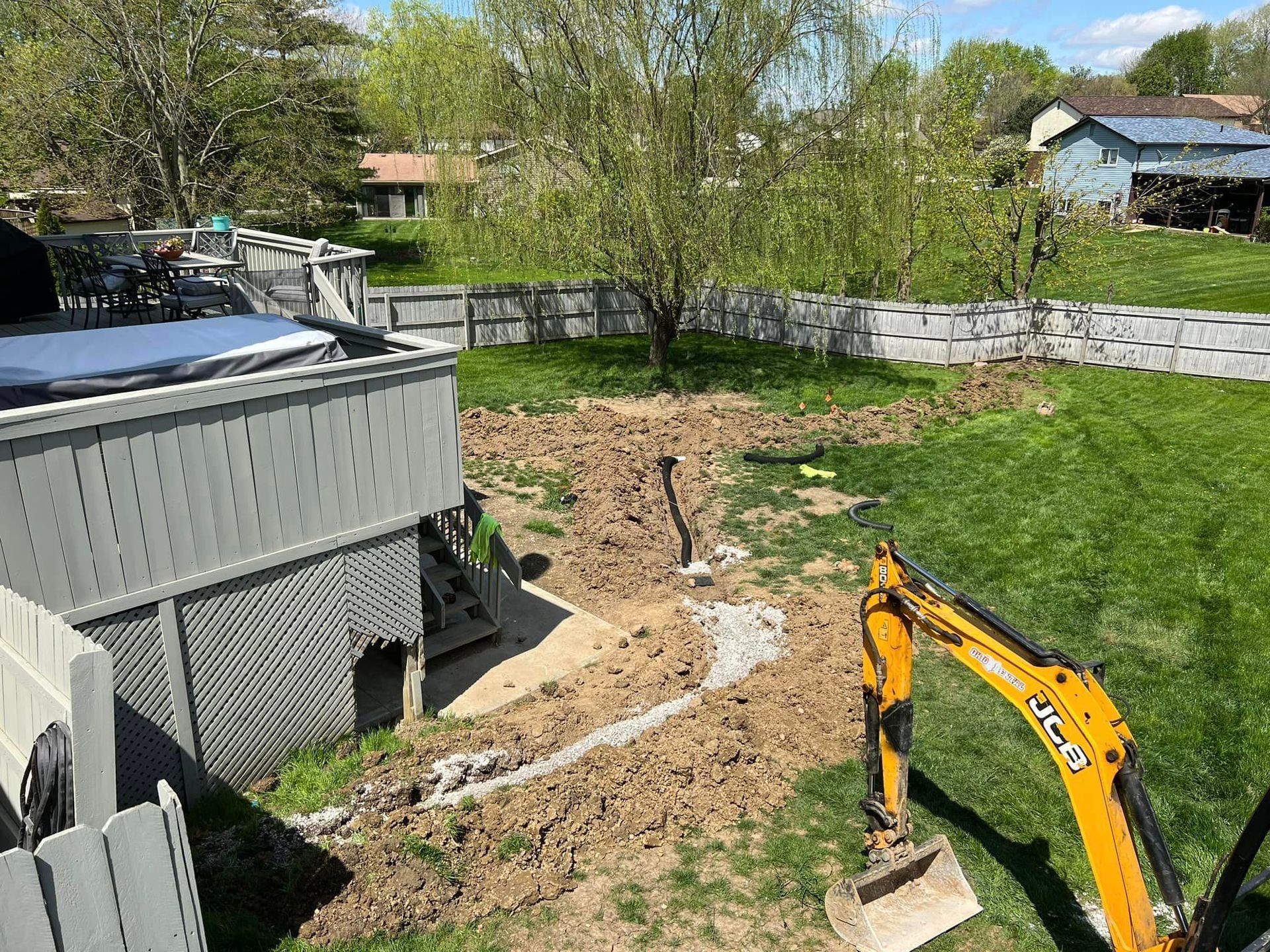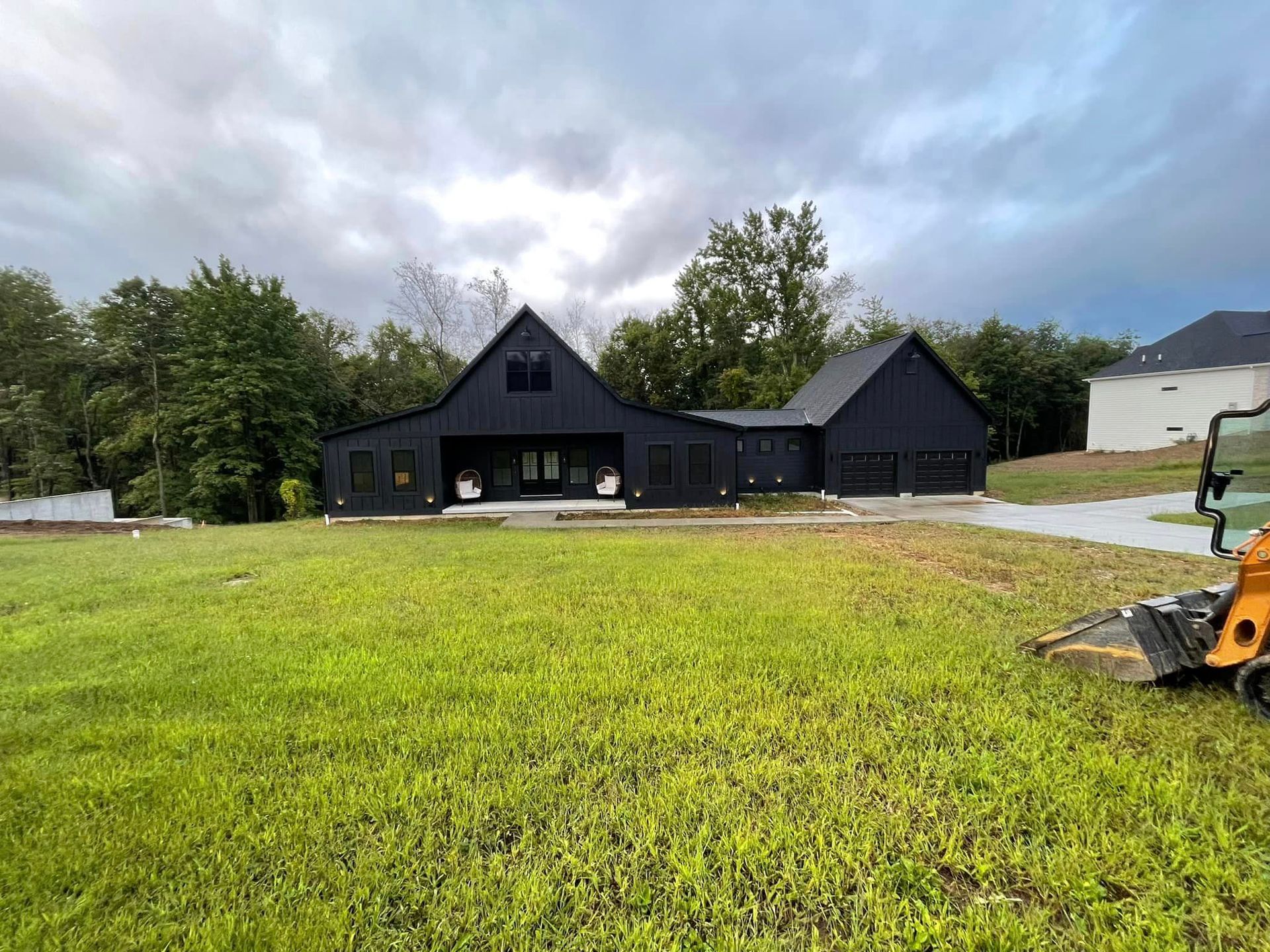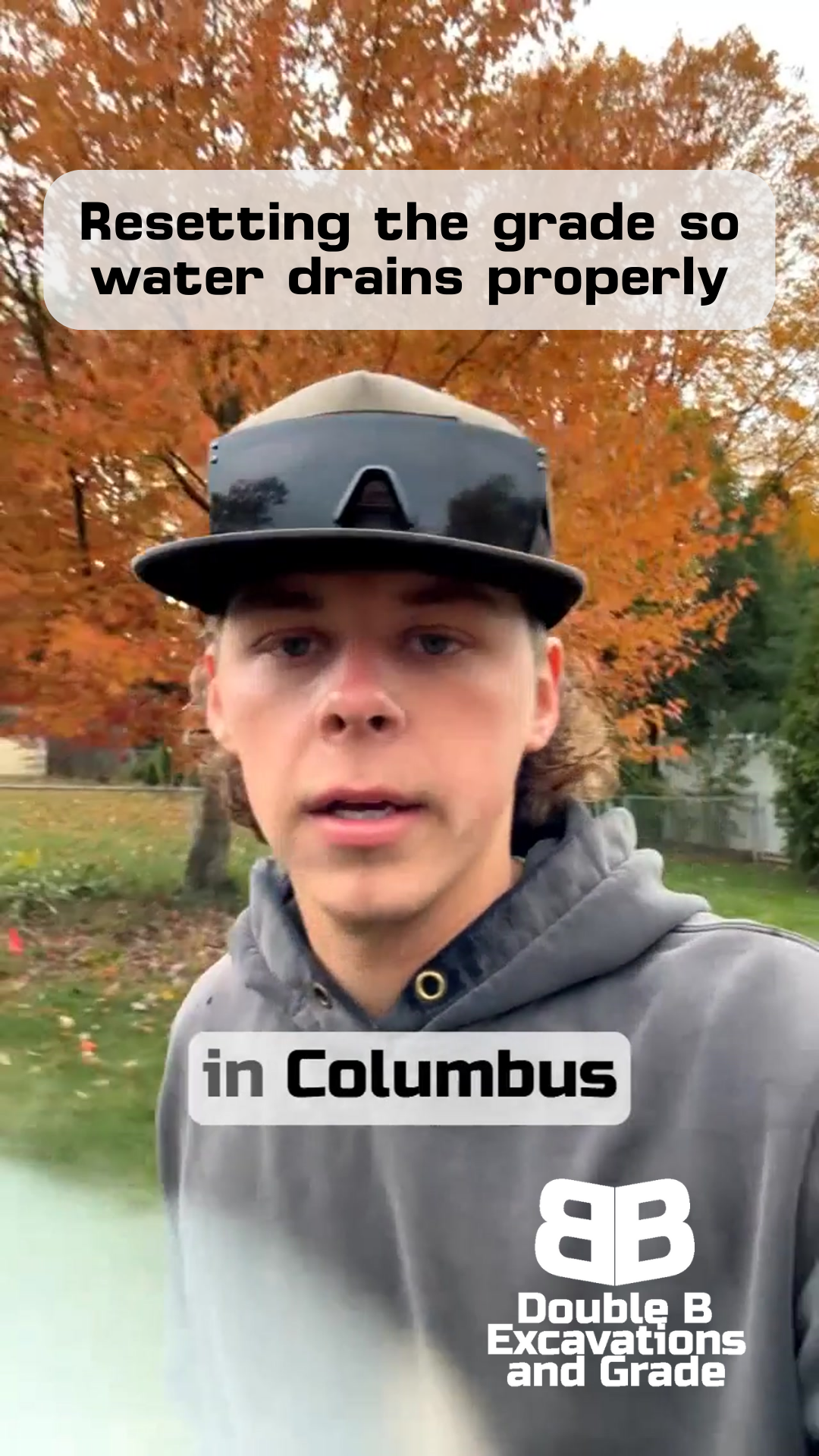Construction Driveway Stone Selection: When to Use 304s vs 57s
Double B Excavations & Grade LLC
Making Smart Stone Choices
WHY TIMING YOUR STONE SELECTION MATTERS
We're out here in Delaware-Westerville, tackling a 500-foot driveway project, and I want to share something that comes up on almost every job we do.
Folks often ask for the nicest-looking stone right from the start. And I get it - everyone wants their property looking good as soon as possible.
But here's the thing: when you're dealing with construction traffic, choosing the right stone at the right time isn't just about looks - it's about saving money and preventing headaches down the road.
Think about it this way: you wouldn't wear your best shoes to work on a muddy job site.
The same thinking applies to your driveway stone during construction.
Getting this right means understanding what each type of stone does best, and when to use it.
Welcome to Double B!
Understanding Your Stone Options
Let's break down the three main players in a proper construction driveway:
First up is #2 stone - this is your foundation layer. Think of it as the backbone of your driveway. We're laying this down first on our Delaware-Westerville project because it creates a solid base that locks together. When you're putting down stone over fabric like we are here, you need that stable foundation more than ever.
Next comes 304s - this is your workhorse during construction. Some clients want to skip straight to 57s, but here's why we recommend 304s during the building phase: it can handle the daily beating from heavy trucks and equipment without falling apart. On this project alone, we're putting down 130 tons of it. That's not overkill - that's smart planning.
Finally, there's 57s - this is your finishing stone. It looks great and makes for a smooth drive, but it's not meant to handle constant heavy traffic. That's why we save it for last. For this 500-foot driveway, we'll eventually use about 80 tons of 57s, but only after all the heavy construction work is done.
The Construction Phase Reality
Let me paint you a picture of what your driveway faces during construction. It's not just a truck or two - we're talking about concrete mixers that weigh up to 80,000 pounds, material delivery trucks loaded to the max, and a constant stream of construction vehicles. This isn't your typical residential traffic.
Just this morning in Delaware-Westerville, we watched several heavy trucks make their way down the drive. And remember - this is just day two. We've got weeks of heavy traffic ahead, especially since they're actually moving an entire house down this driveway. That's the kind of traffic your stone needs to handle.
Here's where I see people waste money: they rush to put down that pretty 57s stone early, thinking it'll save them time. But what usually happens? That finishing stone gets crushed and scattered under heavy loads, and suddenly you're looking at replacing it all over again. I've seen it happen too many times, and that's exactly what we're trying to avoid here.
Smart Staging Strategy
So here's how we do it right:
Phase 1: We start with #2s as our base layer. On this project, we're trucking it in with the skid steer and laying it carefully. Then we compact it properly - this step is crucial. You can't skip proper compaction if you want everything above it to hold up.
Phase 2: This is where the 304s come in. We're using this for our construction phase because it can take a beating while still providing a stable surface. It might not be as pretty as 57s, but it's doing the important work of protecting your investment.
Phase 3: Only after all the heavy construction is done do we come back for the finishing touch. That's when we'll refresh the surface and lay down those 57s. This way, when we put down that finishing stone, it's going to stay looking good instead of getting torn up within weeks.
This isn't just about being particular - it's about being practical. Every ton of stone costs money, and nobody wants to pay for the same work twice.
Real World Application
Let's look at what this means for our Delaware-Westerville project. We're talking about a 500-foot driveway - that's no small job. The numbers tell the story: 90 tons of #2s for the base, 130 tons of 304s for the construction phase, and eventually 80 tons of 57s for the finish. Each type of stone has its purpose and its time.
When the client first asked about going straight to 57s, I had to explain why that wouldn't be the best use of their money. Sure, it would look great for a week or two, but with a house being moved down this driveway and all the construction traffic that comes with it, we'd just be throwing money away. That's not how we do business.
Conclusion
Here's what it all comes down to: proper stone selection and timing isn't just about being picky - it's about being smart with your money. Yes, it takes more planning. Yes, it might mean waiting a bit longer for that perfect finished look. But in the end, you're getting a driveway that's built to last, without paying for the same work twice.
Looking Forward
If you're planning a construction project - whether it's moving a house like our Delaware-Westerville job or building something new - take the time to think about your driveway strategy. The right stone at the right time makes all the difference. Remember: construction driveways aren't just paths to your project; they're investments in your project's success.
Need help planning your construction driveway? We're always happy to walk through the options and help you make the smart choice for your specific situation. Because at Double B, we're not just laying stone - we're building foundations for success.
